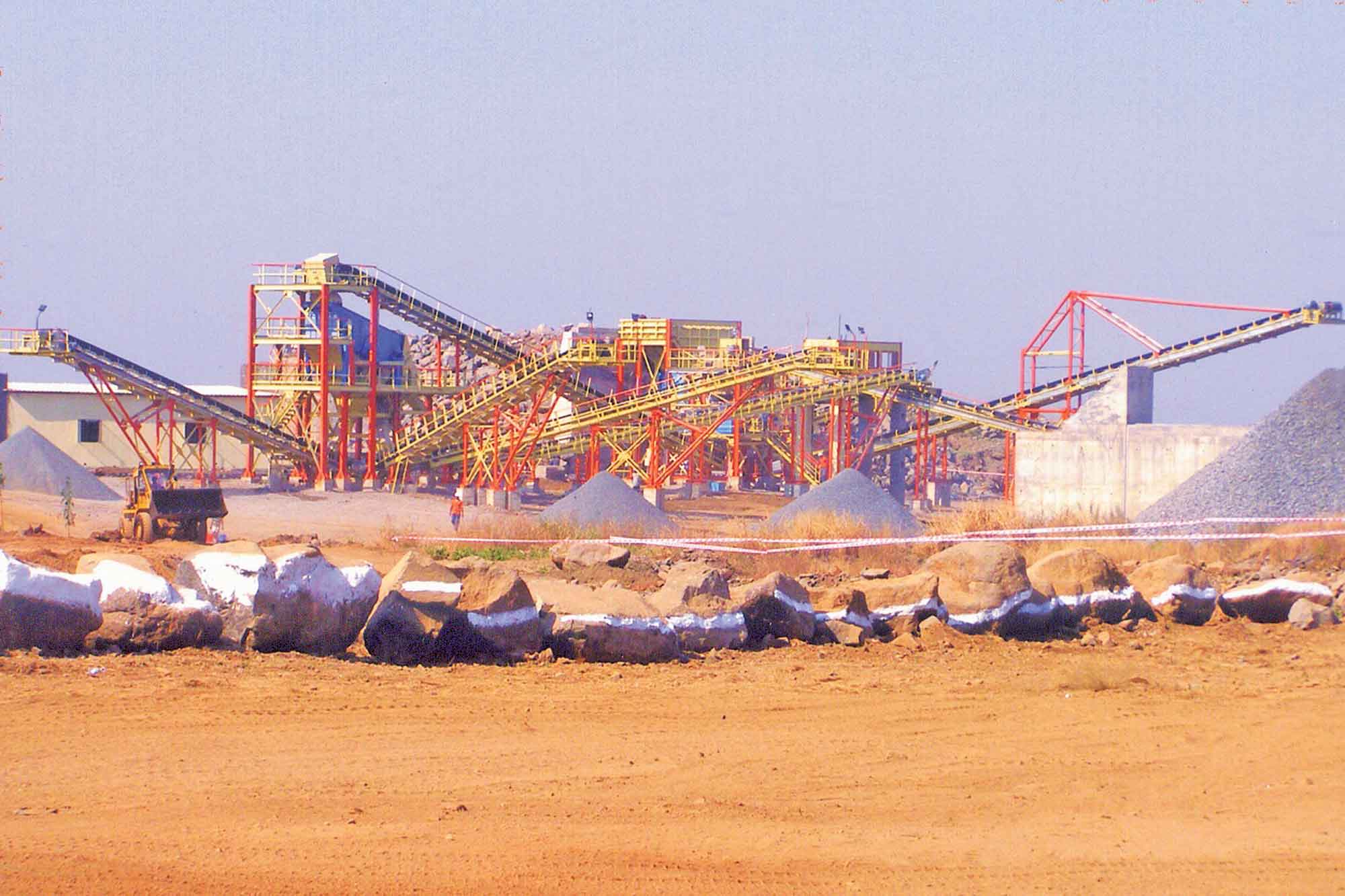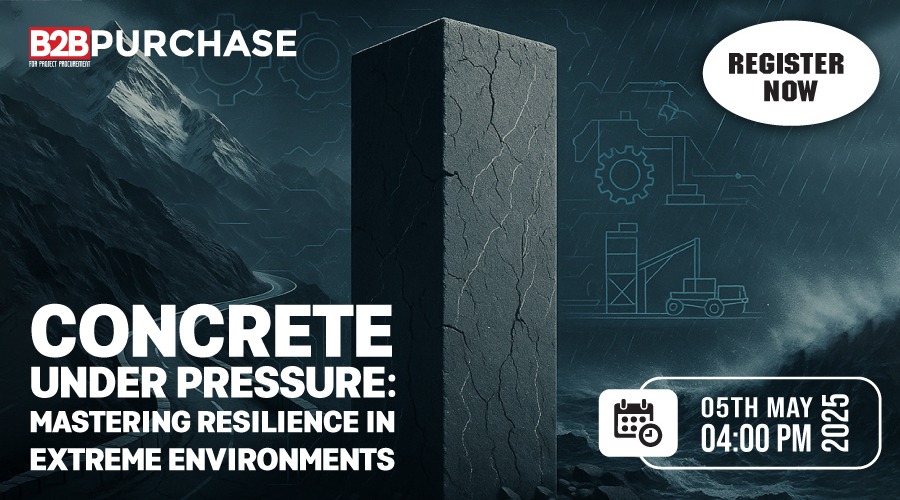How to ensure quality of aggregates
By Edit Team | May 27, 2014 11:32 am SHARE

Being a component of composite materials; aggregates are considered to be the most mined materials in the world. The aggregate serves as reinforcement to add strength to the overall composite material. Hence for better results, quality of aggregates should always be taken care of
Aggregates refer to a broad category of coarse particulate material used in construction, including sand, gravel, crushed stone, slag, recycled concrete and geosynthetic aggregates. These resist compressive stress and provide bulk to the composite material. For efficient filling, aggregate should be much smaller than the finished item, but have a variety of sizes. For example, the particles of stone used to make concrete typically include both sand and gravel.
Sandeep Kapur, Vice President, Business Development and Projects, Lafarge Aggregates & Concrete India Pvt. Ltd., says, “Aggregates constitute the largest quantity of any building material used in construction activities. They are a quintessential component of composite construction materials such as cement concrete and asphalt concrete. They serve to reinforce and add comprehensive strength to the structure. They are also used as base material under foundations, roads, and railroads. Any construction project would comprise of at least 85-90 per cent, by volume, of aggregates in the total material mix.”This clearly indicates the significance of aggregates in any type of construction. That is why; no compromise should be made with the quality of these aggregates.
The market needs for quality aggregates have given rise to new business players in the field as well. Rashid Merchant, Associate Vice President, RMC Readymix (India), a division of Prism Cement Ltd., says, “Understanding critical importance of good quality aggregates; RMC India ventured into the aggregates business and currently operates large quarries and crushers. It manages high-tech aggregate setups in Mumbai, Bengaluru, Hyderabad, Mangalore and Sawantwadi.”
Bureau of Indian Standards (BIS), the standards body of the country, formulated an Indian standard specification for artificial lightweight aggregates covering manufactured aggregates, such as foamed blast furnace slag, bloated clay aggregate, sintered fly ash aggregate and cinder aggregate (IS 9142).
Lafarge’s range of aggregates is tested according to Indian standards IS 2430 sampling, IS 2386 testing and IS 383 aggregates for concrete.
Manufacturing process and importance of selecting right equipment
The manufacturing process comprises of two stages: mining and processing or crushing.
Mining comprises of drilling, blasting, extraction of aggregates, sizing and shipping. Selection of equipment is crucial and depends on the quality of available rock, required fraction sizes and the quantity of the aggregates required for the project. Selection of equipment for mines depends on the quality of rock available, the quality of the strata, the overburden and other technicalities.
For crushing activities the technologies involved are manual crushing, two-stage combinations such as jaw-jaw crusher and jaw-cone and three-stage combinations of jaw, cone and cone or VSI. The final plant design depends on the nature of mineral to be crushed as well as the end use. According to Mr Kapur, “Selection of the crushing equipment depends on the end use of the aggregates and the available loading and stockpiling facilities. For example, aggregates for road construction usually require less processing than aggregates produced for concrete.”
R S Raghavan, Managing Director, PROMAN Infrastructure Services Pvt. Ltd., says, “Materials like granite tend to achieve a better shape of the aggregate in two stages for the sizes closer to the closed side setting of the cone.
However, with materials like basalt, gabbro, it is necessary to have a VSI for the third stage.”
Having a plant in Bangalore PROMAN manufactures range of crushing, screening and sand washing machines for quarry and minerals sectors. PROMAN’s range of products include PROJaw, PROcone, PROMAN-REMco VSI and VSG, PROMAN-Finedoor screens and grizzlies, PROMAN-ORTNER sand washing screens and Midwestern special screens.
According to Mr Raghavan, “Three-stage crushing plant gives the best quality with jaw, cone and a VSI combination. Reduction ratio of 1:4 of primary
and secondary is normal for the jaw
and cone.”
VSI crusher based on the configuration has the capability to correct the shape as well as the gradation and crush it finer or coarser. Depending on the configuration a good VSI can achieve up to 1:16 reduction ratio. The cone and the VSI should run in the closed circuit to ensure a well graded feed which in turn will help in achieving inter-particular crushing and with a proper hopper and the feeder we can achieve the choke feed which delivers the best quality aggregates from the shape and gradation point view.
Quality assurance
Talking about the factors that affect the quality of aggregate, Mr Raghavan explains, “The quality of aggregate and sand depends on the type of rock, the communition process and the type of crushers. To produce the best quality of sand that is cubical, well graded, irrespective of the type of rock, a good VSI crusher is definitely required. A good VSI should possess features like multiport rotors, different chamber-liners, and range of rotor tip speed to work like a shaper. Such equipment proves to be a key to achieve the best quality of sand and aggregates.”
Mr Merchant shares their techniques at RMC Readymix, “Our quality plan covers all quality aspects of source material handling, aggregate processing etc. Hence, there are different procedures for source identification and control, product identification and traceability, process control, inspection and testing, corrective and preventive action, handling and storage of product, sampling and testing of final product, etc.”
Sensing the need for quality of manufactured sand, along with the quality assurance, has inspired RMC Readymix to come up with its trademarked product Prismsand which is a type of manufactured sand. The company claims that unlike river sand, Prismsand does not contain any chlorides, impurities and other deleterious materials; hence, no sieving is required and product wastage is zero.
Mr Kapur explains how Lafarge Aggregates ensures the quality of finished products. “At Lafarge, it is done through three stage plants i.e. better control on the particle size distribution at each sieve and improved grading of GSB, coarse aggregates and manufactured sand grading analysis is done on a daily basis. Continuous monitoring and control of settings and parameters of the feeding, crushing and screening equipment is done to achieve consistency in finished product. In addition, stockpile management and loading control to eliminate contamination and segregation takes place.”
The intrinsic parameters of aggregates have an impact on the quality of concrete. Aggregates used in concrete should possess high quality so that better and long-lasting results could be obtained. Obviously, quality of aggregates must be ensured before their actual use in concrete making.
Commenting on this, Mr Kapur says, “We take great care during the selection of the deposit, which paired with our state-of-the-art mineral extraction equipment and aggregates manufacturing facilities. This in turn ensures consistency of quality and year-round availability of all our products.”
Selection of the crushing equipment depends on the end use of the aggregates and the available loading and stockpiling facilities
Sandeep Kapur, VP, Business Development and Projects,
Lafarge Aggregates & Concrete India Pvt. Ltd.
Three-stage crushing plant gives the best quality with jaw, cone and a VSI combination
R S Raghavan, Managing Director,
PROMAN Infrastructure Services Pvt. Ltd.
Our quality plan covers all quality aspects of source material handling, aggregate processing etc
Rashid Merchant, Associate Vice President,
RMC Readymix (India)
Cookie Consent
We use cookies to personalize your experience. By continuing to visit this website you agree to our Terms & Conditions, Privacy Policy and Cookie Policy.





































-20240213125207.png)

























